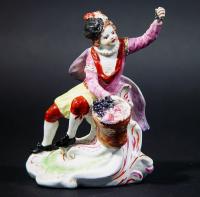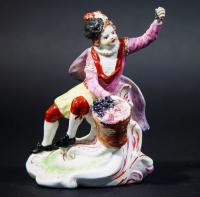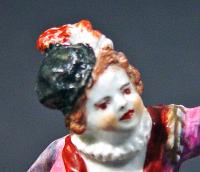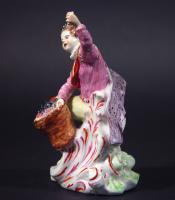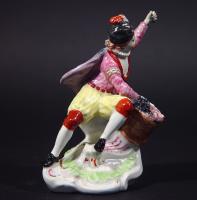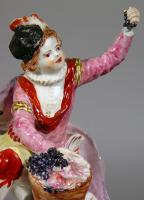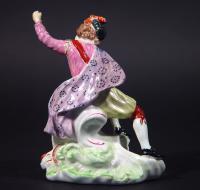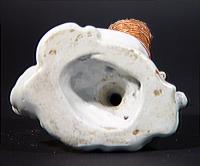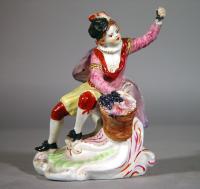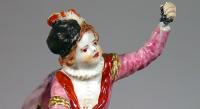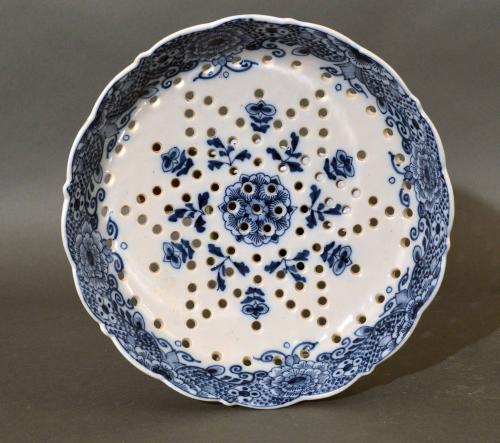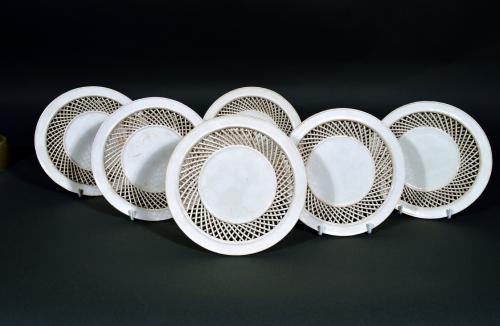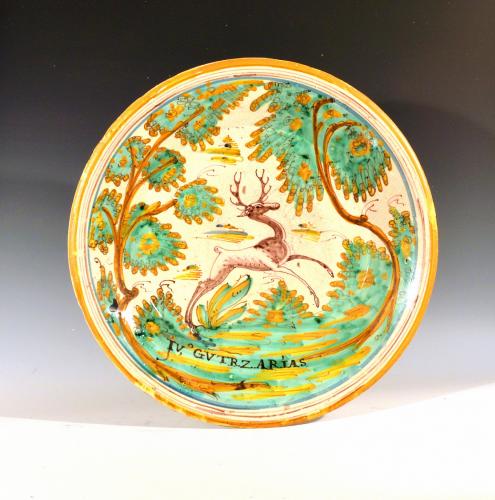
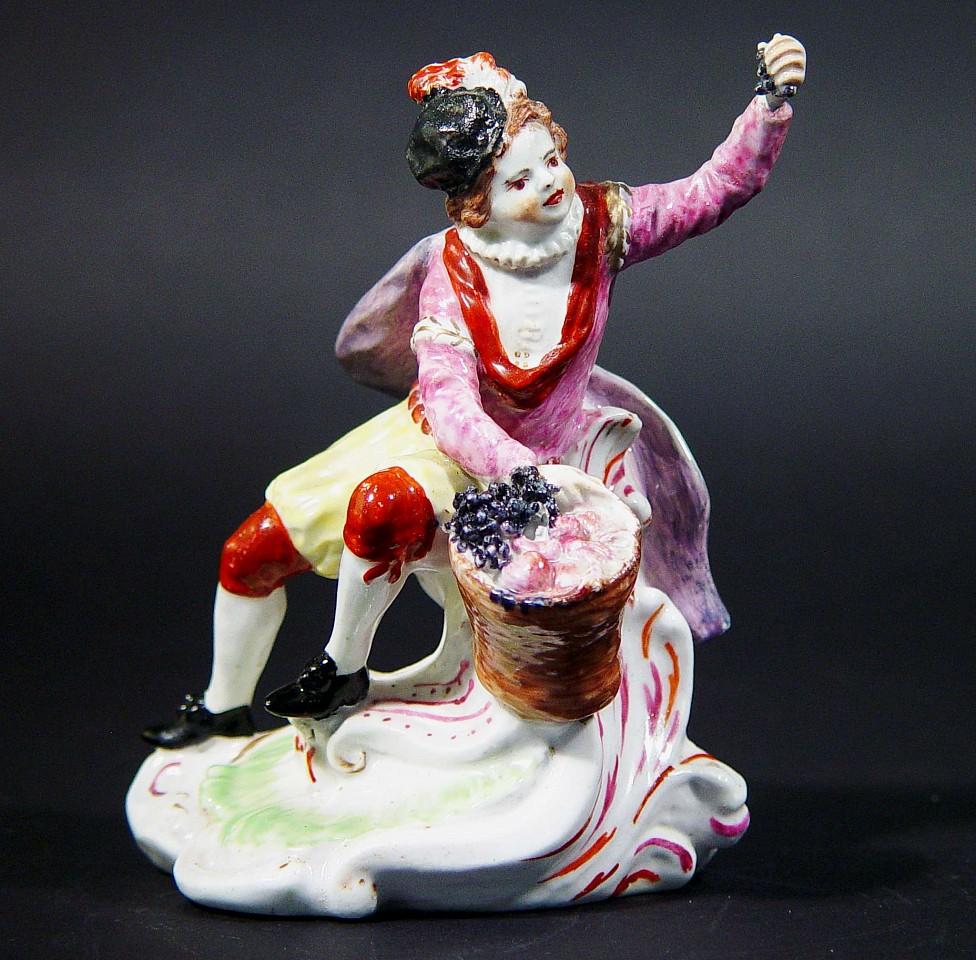
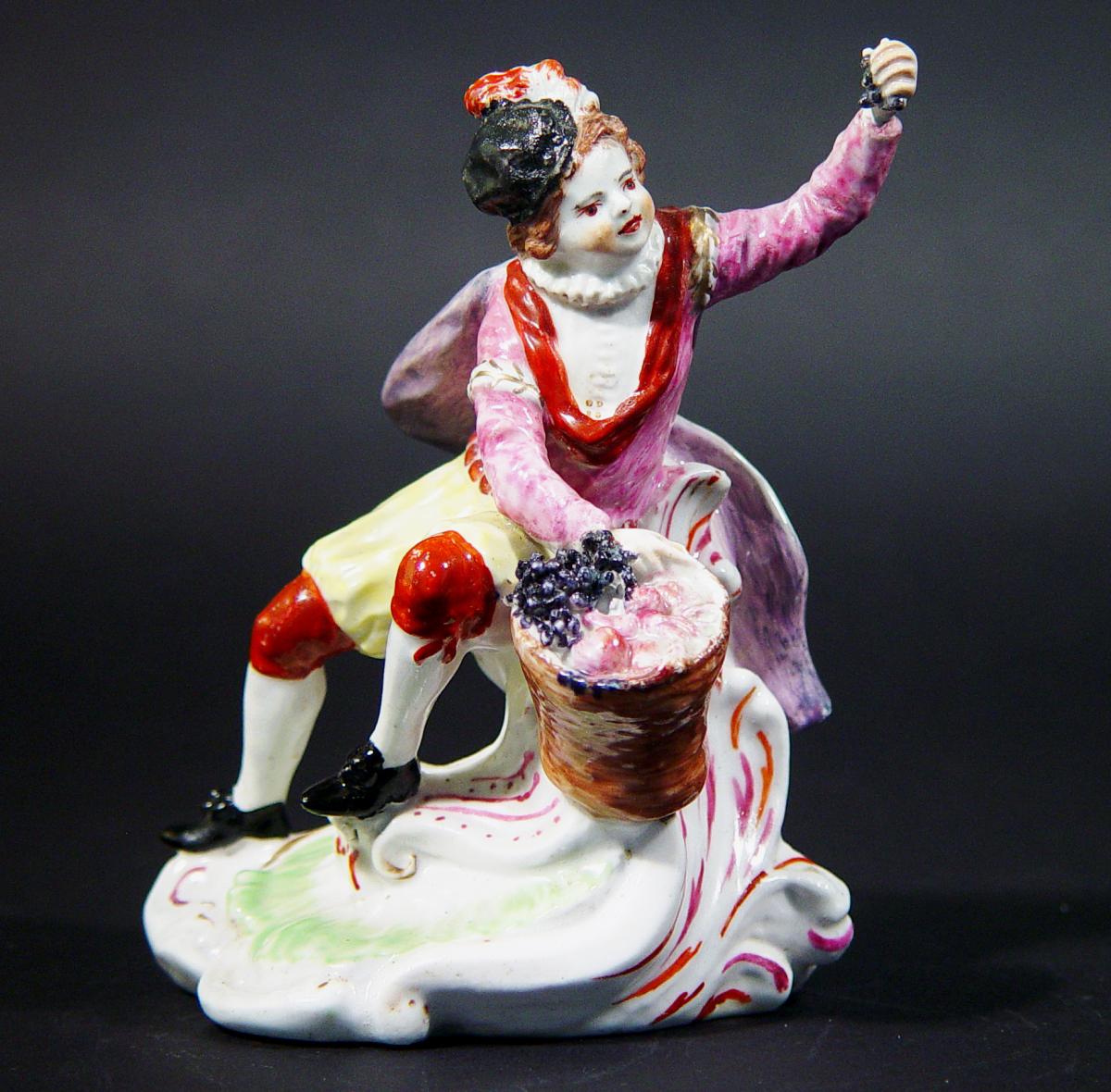
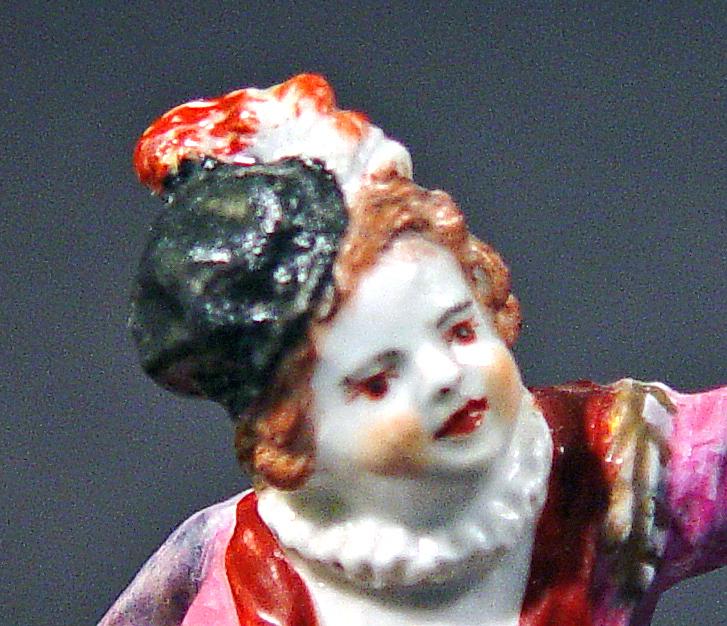
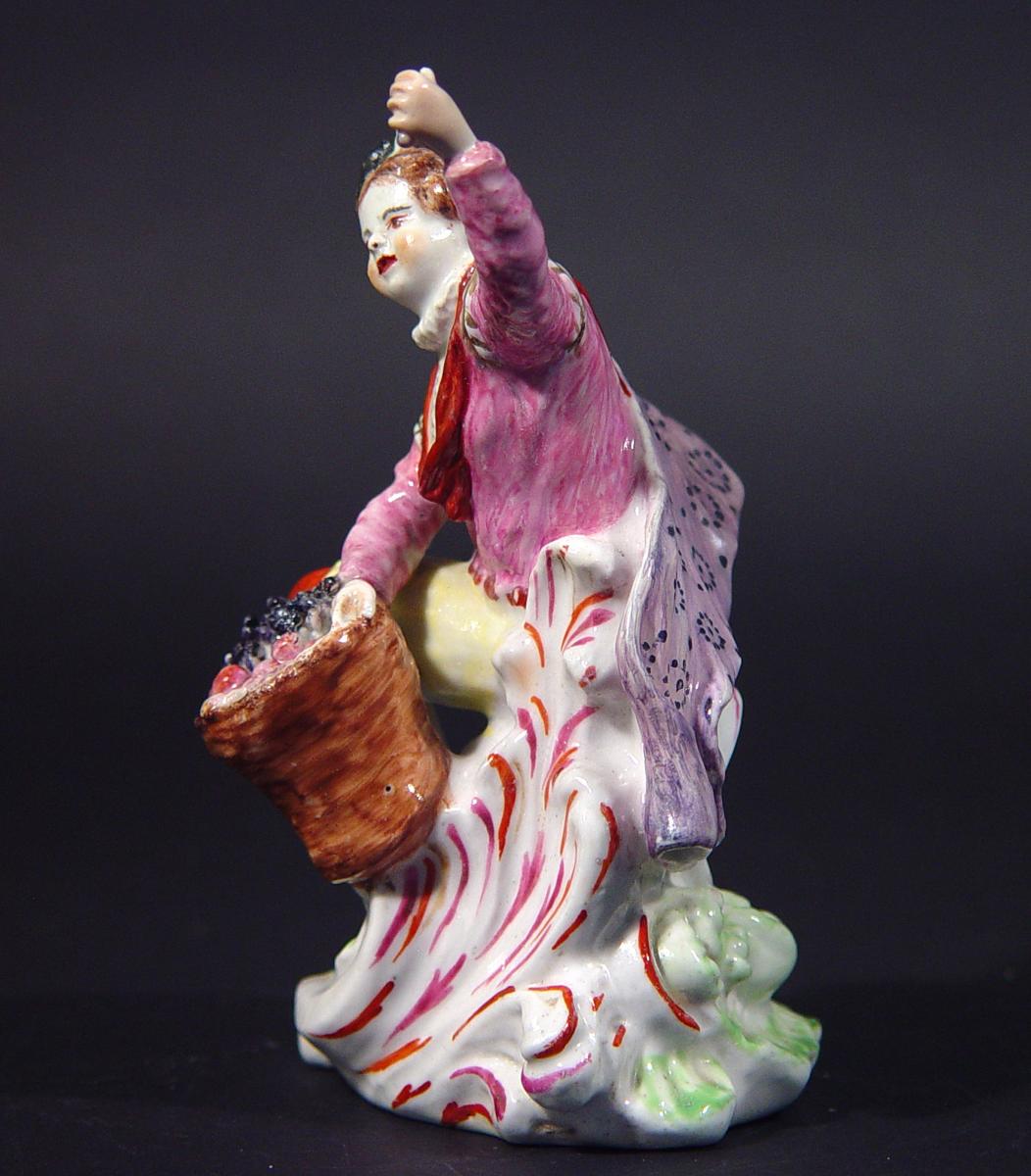
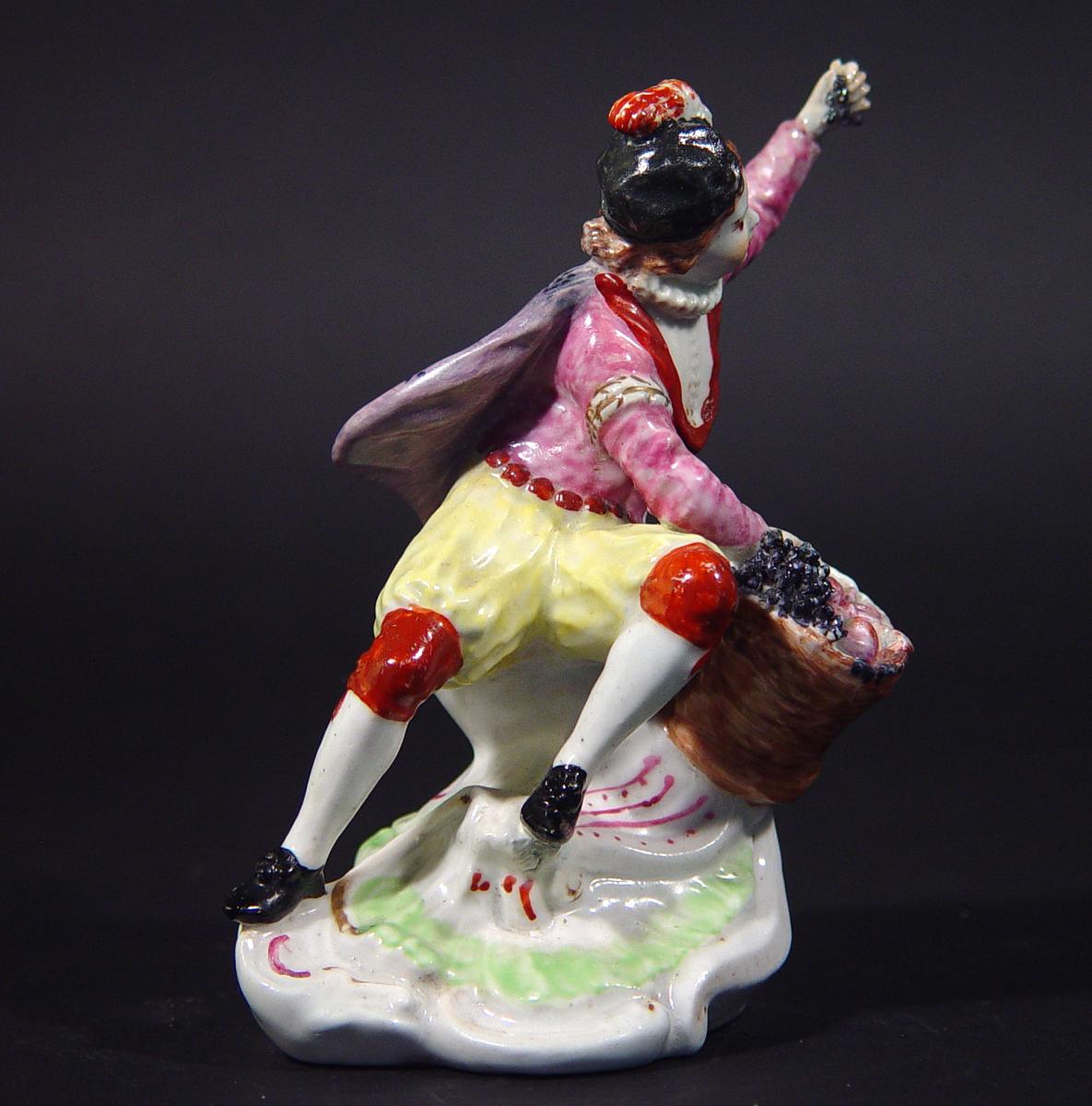
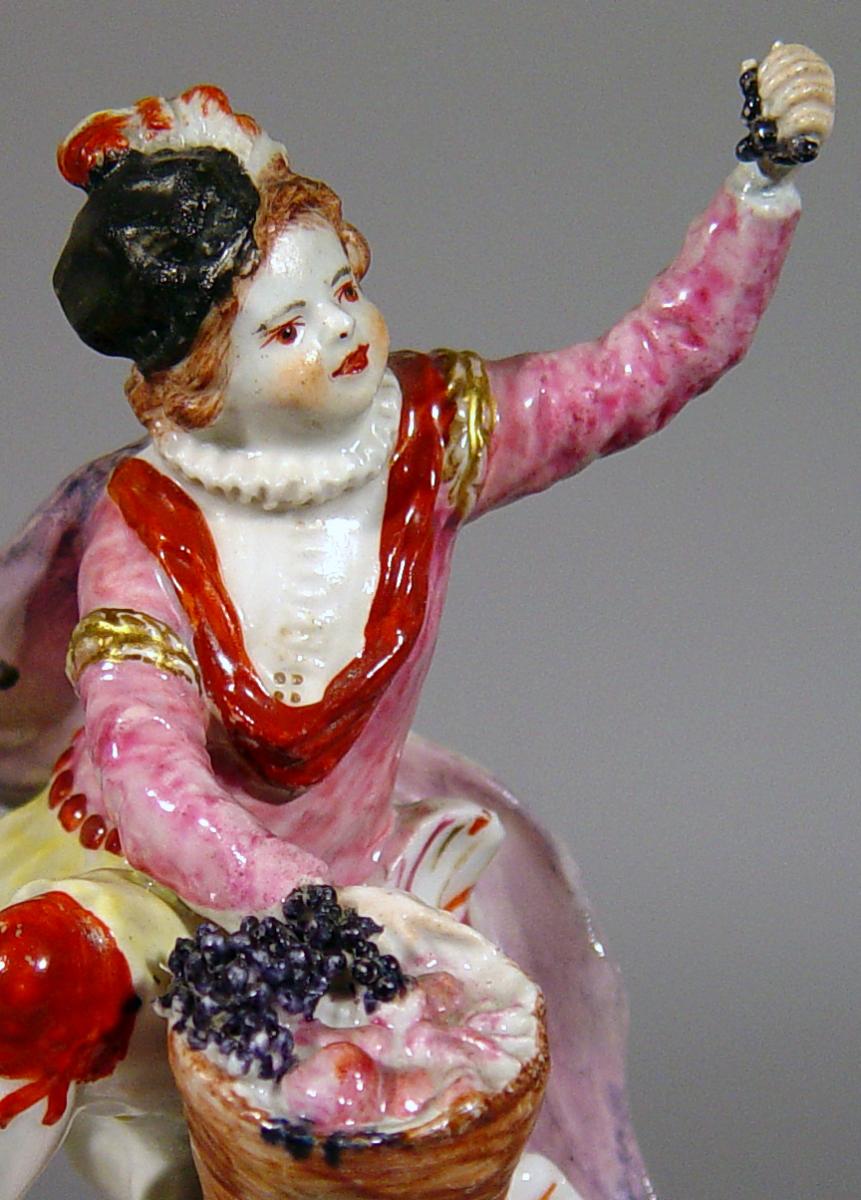
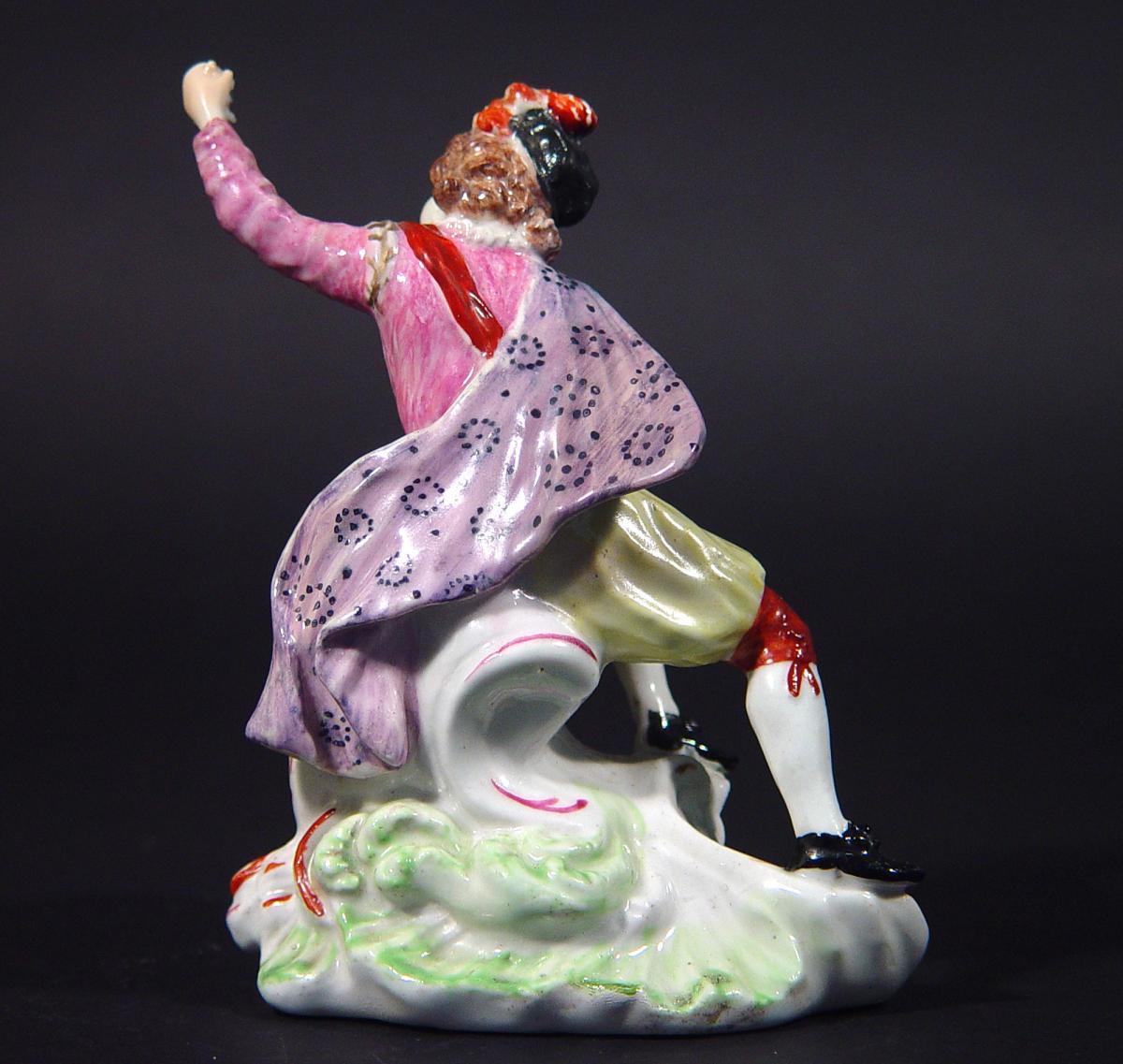
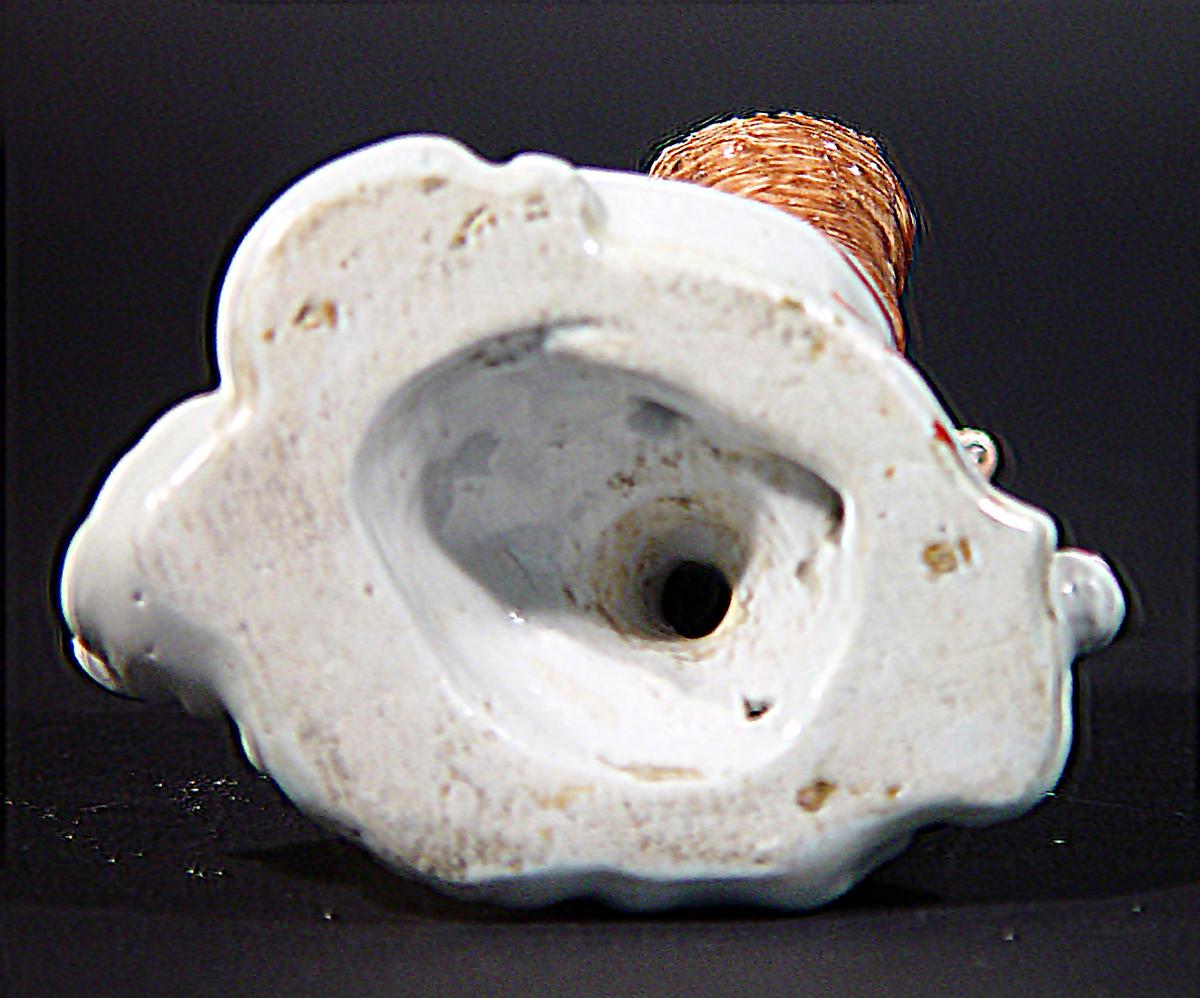
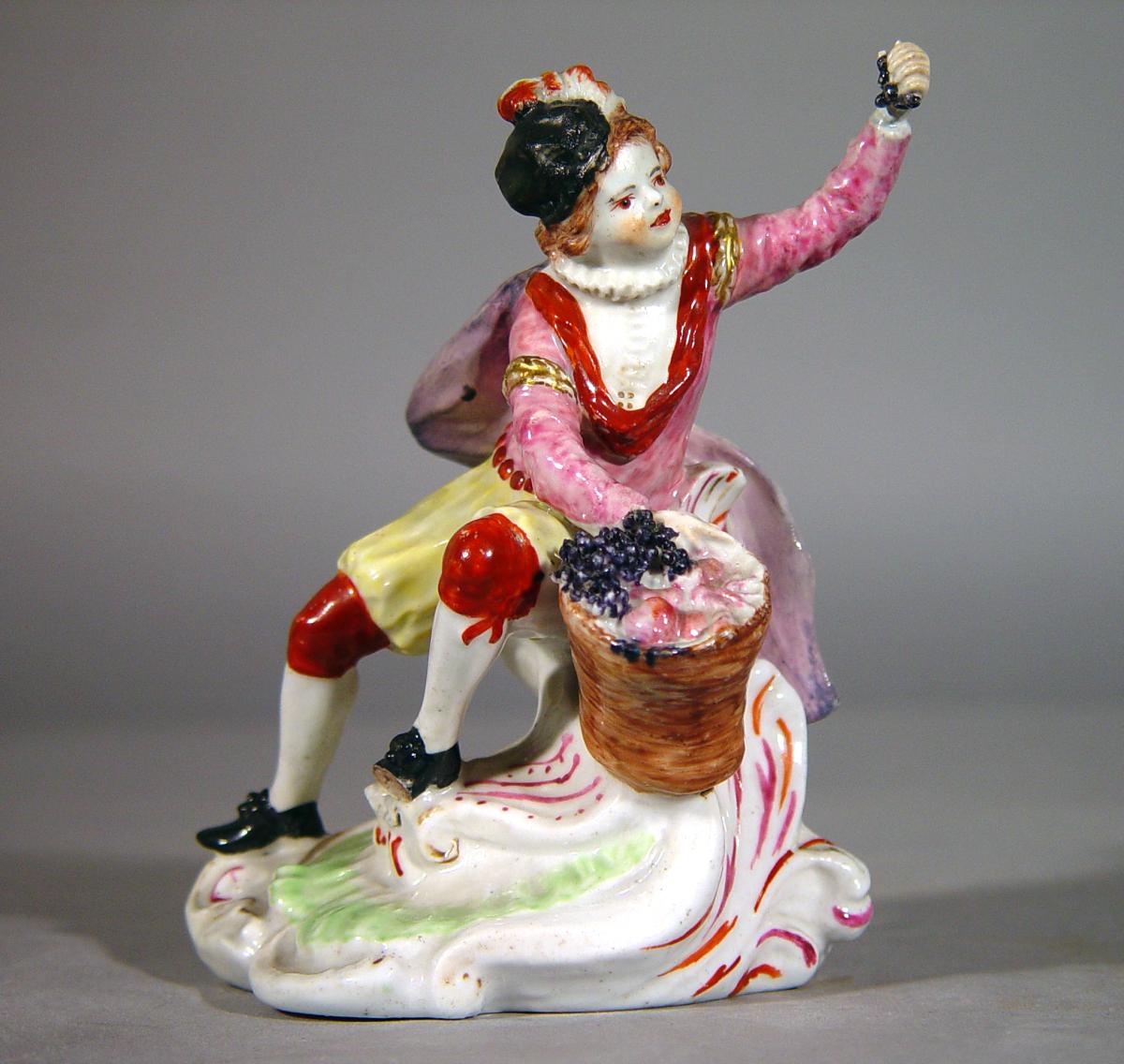
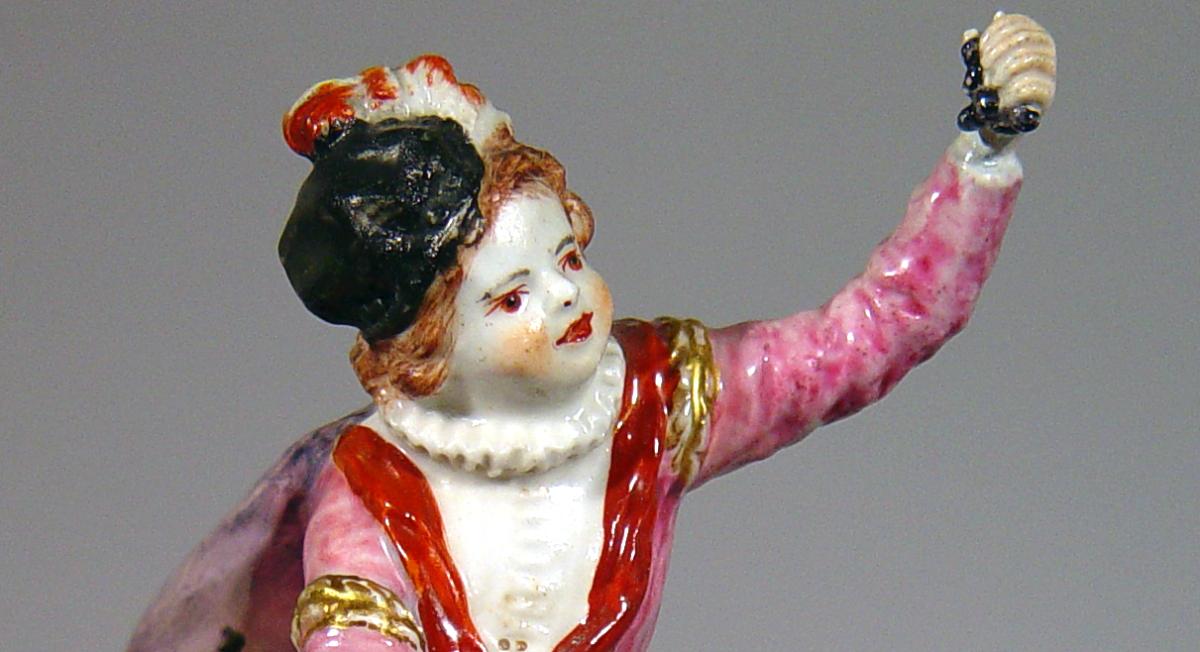
Price
£6000.00This object includes complimentary, Insured Shipping / Delivery within the UK
This object includes complimentary, International Insured Shipping
This object is eligible for a Certificate of BADA Provenance
The BADA Standard
- Since 1918, BADA has been the leading association for the antiques and fine art trade
- Members are elected for their knowledge, integrity and quality of stock
- Our clients are protected by BADA’s code of conduct
- Our dealers’ membership is reviewed and renewed annually
- Bada.org is a non-profit site: clients deal directly with members and they pay no hidden fees
Antique Vauxhall Porcelain Figure of Autumn Modelled as a Grape Vendor.
Circa 1756-60.
The Vauxhall porcelain figure representing the season autumn is modelled as a youth holding a bunch of grapes in one hand and a basket of fruit in the other. He is seated upon a rococo scroll and ruffled base.
This type of figure had until recently been attributed to Longton Hall.
Reference:
See almost identical figure in the Victoria & Albert Museum given by Lady Charlotte Schreiber, Museum number: 414:680-1885, Gallery location: Ceramics Study Galleries, Britain & Europe, room 139, case 6, shelf 7. (http://collections.vam.ac.uk/item/O182723/figure-vauxhall-porcelain-factory/)
Bradshaw, Peter. 18th Century English Porcelain Figures: 1745-1795. The Antique Collectors' Club, England, UK. 1981.
Colour Plate S illustrates a figure in similar position; Plate 140 shows a female fruit seller.
Watney, Bernard. Longton Hall Porcelain. Faber and Faber, 24 Russell Square, London, England, UK. 1942.
Plate 37A illustrates a flower-seller in a similar positioning.
See: For a discussion of Vauxhall see page 6 of LONDON'S ROLE IN THE HISTORY OF ENGLISH PORCELAIN , by James Sewell, O.B.E., M.A., F.S.A., 15 October 2007.
The most significant of the lesser factories was Vauxhall. At the beginning of this paper, I have already alluded to the South Bank as an important area of ceramic production.
In 1743 an earthenware potter named John Sanders established a factory in Glasshouse Street and a soapstone licence was taken out by him and Nicholas Crisp in 1751.
Crisp was a freeman of the Haberdasbers' Company, but traded in the City as a jeweller with a shop in St. Paul's Churchyard.
The Glasshouse Street premises were expanded in the same year and it seems likely that porcelain production must have commenced about this time, although it appears it was not until May 1753 that 'a strong and useful Manufacture of Porcelaine ware made there of English Materials' was advertised.
Crisp's financial difficulties elsewhere led to difficulties for the business in the next decade and a 1764 sale of the factory's stock mentions 'curious Figures, all Sorts of ornamental Toys, Knife-handles, and variety of all Kinds of useful Sorts, etc.'.
With this and other information it now seems strange that Vauxhall porcelain went unrecognized as such for many years. A group of figures was classified as Longton Hall, an early Staffordshire factory, and many other wares were grouped together and provisionally attributed to the Liverpool factory of William Ball.
Archaeological excavation, however, has finally established a Vauxhall provenance and we now know that it produced a very wide range of goods, including vases, figures, mortars, flowerpots, candlesticks and over twenty different sauceboat designs.
Crisp later attempted to re-establish his factory at Bovey Tracey in Devon but it appears that very little porcelain was made there. The venture did, however, have some lasting significance as William Cookworthy, proprietor of the Plymouth factory, employed three workmen from Bovey Tracey in December 1767 and it is likely that they had originally worked at Vauxhall.
Dimensions
Height: 13.65cmPrice
£6000.00This object includes complimentary, Insured Shipping / Delivery within the UK
This object includes complimentary, International Insured Shipping
This object is eligible for a Certificate of BADA Provenance
Condition report
The main condition issue is the raised left arm- this has been off/on. The arm is completely original. There was a chip to the tip of the extended right foot and another to the lower edge of the cape on the reverse side. Again another very small one to the feather in his hair. All repairs now invisible. All chips were minor, in my opinion, particularly on such a rare figure.Stock number
ny6005-caniThe BADA Standard
- Since 1918, BADA has been the leading association for the antiques and fine art trade
- Members are elected for their knowledge, integrity and quality of stock
- Our clients are protected by BADA’s code of conduct
- Our dealers’ membership is reviewed and renewed annually
- Bada.org is a non-profit site: clients deal directly with members and they pay no hidden fees


